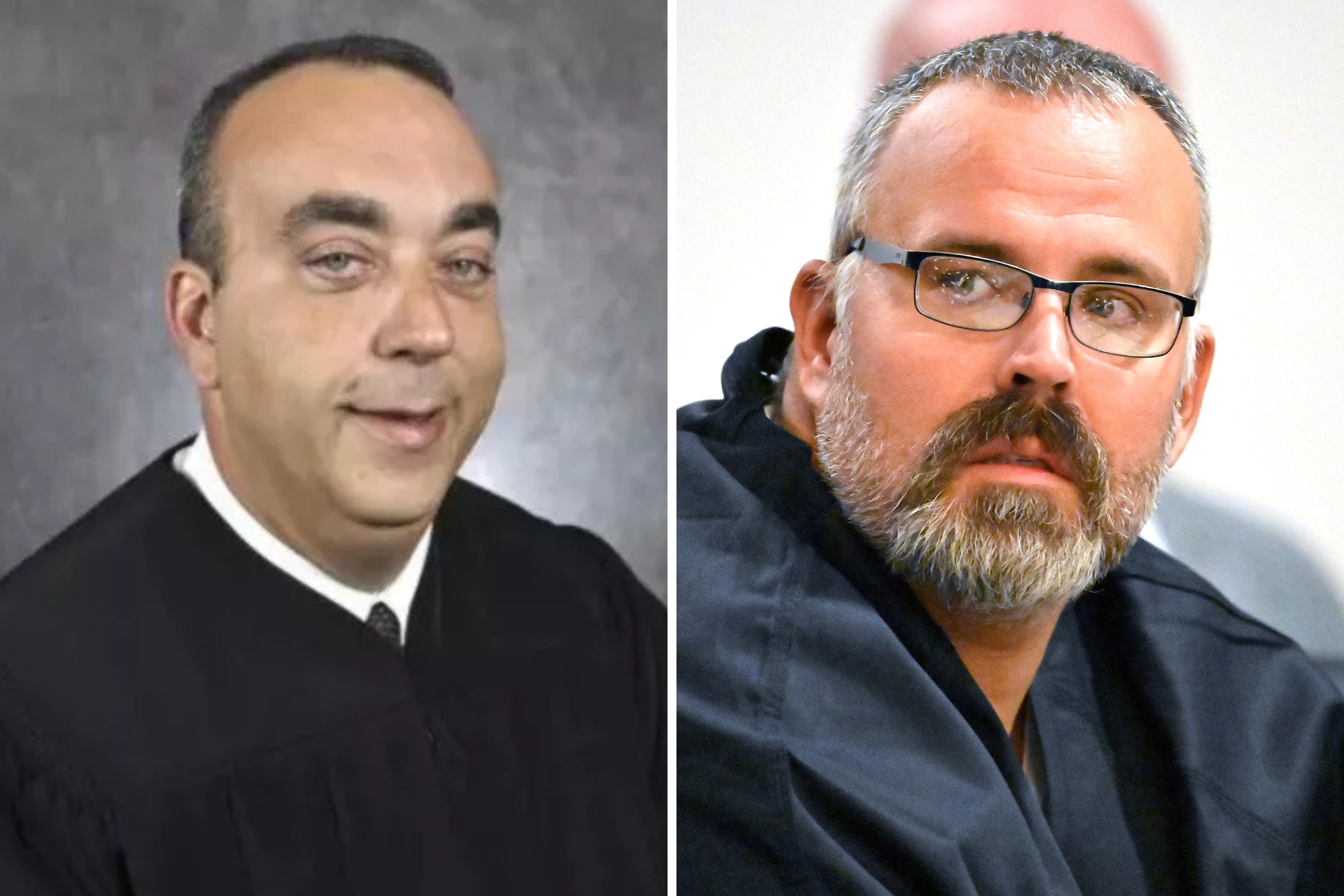The shocking incident at the Letcher County Courthouse in Kentucky on September 19th has left many questioning: why did former Sheriff Shawn “Mickey” Stines allegedly shoot and kill District Judge Kevin Mullins? This tragic event has sent ripples through the community and raised complex questions about motive, mental state, and the circumstances leading to the fatal shooting. While investigations are ongoing and legal proceedings are underway, we delve into the available details to understand the unfolding narrative behind this courthouse tragedy.
Who Was District Judge Kevin Mullins?
Kevin Mullins, 54, was a respected figure in the 47th Judicial District, serving as District Judge. Appointed in 2009 and subsequently elected, Judge Mullins was known for his innovative approach to justice, particularly his focus on integrating treatment services for individuals within the legal system. His obituary highlighted his profound impact, estimating he influenced over 20,000 lives by pioneering a local protocol that connected people to treatment early in their interaction with the justice system, thereby championing recovery. Mullins’ dedication extended beyond the courtroom; he served on the state Judicial Commission on Mental Health alongside Supreme Court Judge Debra Lambert, who lauded his “passion for people” and the countless lives he improved. Hundreds mourned his loss at his funeral, underscoring his significant community standing and the deep void left by his untimely death.
The Courthouse Shooting Incident
On September 19th, the day of the shooting, Shawn Stines, 43, a former Letcher County Sheriff who had retired following the incident, allegedly shot Judge Mullins inside the judge’s own chambers at the Letcher County Courthouse. Details emerging from a preliminary hearing revealed that Stines and Mullins had even shared lunch earlier that day with others, suggesting no immediate prior conflict was apparent. Detective Clayton Stamper of the Kentucky State Police testified that there was a conversation where Judge Mullins suggested a private meeting in his chambers. Later, inside those chambers, Stines reportedly attempted to call his daughter, first using his own phone and then borrowing Judge Mullins’ phone for a second attempt.
 Courthouse Shooting Kentucky
Courthouse Shooting Kentucky
The situation escalated tragically. Surveillance footage played in court depicted Judge Mullins taking cover under his desk as Stines fired multiple shots. The video further showed Stines approaching the judge and firing two more shots at close range before leaving the chambers. Upon being taken into custody, Stines reportedly made a statement about “they’re trying to kidnap my wife and kid,” indicating a possible state of paranoia or delusion.
The “Extreme Emotional Disturbance” Defense
Shawn Stines’ attorney, Jeremy Bartley, is arguing that his client was experiencing an “extreme emotional disturbance” at the time of the shooting. Bartley contended during the preliminary hearing that the evidence presented was insufficient to support a murder charge, suggesting instead that the circumstances pointed towards manslaughter. He argued that the shooting was not premeditated but rather occurred “in the heat of passion” fueled by this emotional disturbance. Bartley stated to PEOPLE, “For us, the highest level of culpability should be manslaughter based on the partial defense of extreme emotional disturbance.” This defense aims to mitigate the charge from murder to manslaughter by arguing diminished culpability due to Stines’ mental state at the time of the event. Despite this argument, Chief Regional Judge Rupert Wilhoit found sufficient evidence to proceed with sending the case to a grand jury for consideration of the murder charge.
The Deposition, Lawsuit, and Questions of Motive
Adding another layer of complexity to the question of “why,” it was revealed that just three days before the shooting, Stines had given a deposition in a lawsuit where he was named as a defendant. This 2022 lawsuit, filed by Sabrina Adkins, alleges that Stines failed to properly train a deputy, Ben Fields, who is accused of forcing Adkins into unwanted sexual acts in Judge Mullins’ chambers. Notably, the lawsuit does not suggest Judge Mullins had any knowledge of this alleged incident.
Ned Pillersdorf, Adkins’ attorney, who conducted the deposition, described Stines’ behavior as “odd,” “subdued, tense, evasive, most unfriendly,” contrasting it with the typically “gregarious and talkative” demeanor of sheriffs in similar lawsuits in Kentucky. Pillersdorf sensed “something going on with him emotionally” during the deposition, raising questions about whether Stines’ emotional state and the pressures of the lawsuit might be linked to the subsequent shooting. While the lawsuit itself does not directly implicate Judge Mullins in any wrongdoing, the deposition and the stress surrounding it could have contributed to Stines’ alleged “extreme emotional disturbance,” potentially influencing his actions.
Community Reaction and Ongoing Questions
The death of Judge Kevin Mullins and the charges against former Sheriff Shawn Stines have deeply affected the Letcher County community. The question of “Why Did The Sheriff Shoot The Judge” remains at the forefront of public consciousness as the legal process unfolds. While the “extreme emotional disturbance” defense offers a potential explanation, the full picture of Stines’ motive and the precise circumstances leading to the shooting are still under investigation. The case is now headed to a grand jury, and further details are anticipated to emerge as the legal proceedings continue, potentially shedding more light on the motivations and factors behind this tragic event in Kentucky.
